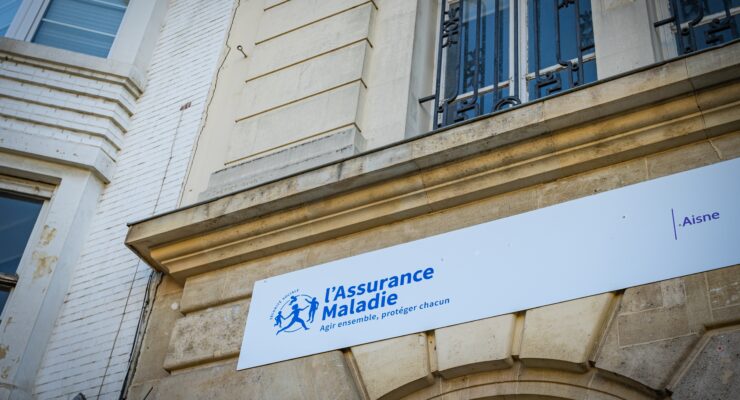For many foreigners, French kisses (not the spicy kind) will be one of the biggest cultural differences to adapt to. But the differences in greetings extend beyond just la bise (la beez, cheek kiss). Even the use of the simple bonjour is not quite identical to that of the English hello or hi. Hopefully this article can serve as a helpful guide on the topic of greetings and salutations.
Rather than splitting la bise and bonjour into separate topics, we’ll group them into scenarios, since oftentimes they go hand in hand. One important thing to remember is this is a very culturally relative topic. My perspective is one of a west-coast Canadian millennial living in Paris. It is possible that experiences will differ depending on where you are from, where in France you are, and even your age. Otherwise, rest assured that the contents of this article have been read and validated by French people.
1. Transactional exchanges with strangers
Let’s start with the easiest, greeting employees in service industries. Bonjour (bong-zhoor, literally good day) is the most important word to know. When you walk into a small store such as a boulangerie or a cafe, the first thing to say is bonjour.
If the sun has set, say bonsoir (pronounced as bong-swa) instead of bonjour. For simplicity, I’ll continue to use bonjour to mean both since they are fully equivalent in meaning and connotation.
If you’re feeling confident enough, you can also optionally add on madame or monsieur (muh-syuh, sir) after bonjour. Avoid using mademoiselle (mad-mwa-zel, young lady), as it has become less popular and can be received poorly.
Once you greet the person and they acknowledge you back, you can go on to place your order or ask your question. In English, it is normal to initiate a question or conversation with excuse me, but in France, it is more polite to get someone’s attention with bonjour, as a sudden excusez-moi can come off as too blunt.
Once you’ve been helped and are about to leave the establishment, you can say merci au revoir (mer-see O vwa, thank you goodbye). In English we don’t say goodbye very often but the word in French acts more as the equivalent of have a nice day. To more explicitly wish the person a nice day, you can swap out au revoir for bonne journée (bun zhool-nay, have a nice day). Basically, the merci is mandatory, and for the second element you have a choice between au revoir and bonne journée. Saying only merci and nothing else sounds a bit like an unfinished sentence.
Similarly to bonjour and bonsoir, the evening equivalent for bonne journée is bonne soirée (bun swa-ray, have a good evening).
Obviously, there is no need to give a cheek kiss in these situations. Also note that ça va (sa va, how are you) is not said between strangers.
2. Meeting someone new whom you might see again
If you’re meeting the friend or family member of a friend, or going on a first date, this is where la bise can get involved. But not to worry, there are general patterns that we can follow.
Let’s first understand what la bise looks like. In the Paris region, which is considered to be in northern France, it consists of two kisses. You start by giving your right cheek followed by your left. Don’t reverse the order lest you find yourself in a very uncomfortable situation. While doing the kisses, it is normal, but not obligatory, to make a subtle smacking sound with your lips, but don’t make a cliché mwah sound with your voice. To avoid coming in too fast and painfully colliding your cheekbones, you can place a hand on the upper arm or shoulder of the other person to stabilize yourself.
In parts of the South, people give three bises. In other towns, the number can even be four. And in the eastern region, people might start with the left cheek rather than with the right.
Hugging is very rare so you should avoid initiating them unless you are certain. Interestingly, in France hugs are perceived to be more intimate than cheek kisses, so they are reserved for close relationships or special occasions.
If your friend introduces you to a friend or family member who is French, start by saying bonjour enchanté (on shawn tay, hi nice to meet you). Your next gesture will depend on the gender of that person. If either you or the new person (or both of you) is a girl, you should be ready to present your cheek, as la bise is most common when one or both people involved are women. Again, there’s usually no need for a hug.
If both of you are men, it can be a bit more unpredictable. While it is possible that there will be la bise, there is a greater likelihood that you can just shake hands or even exchange high fives. Younger generations might also prefer a bro-style half hug.
If it is a hurried encounter or on a busy street (or some other impractical situation), there might not be any physical contact at all. Instead, a simple hand waving gesture and friendly smile may be enough. In case of doubt, it is always safe to let the French person take the lead and just be prepared for the aforementioned possibilities.
Finally, when people part ways, they commonly bid farewell in the same way that they had greeted each other. So if you started with la bise, then you can expect to end with la bise as well.
3. Greeting someone you already know
If you’re seeing someone that you already know, you can either continue to greet them in the same way that you greeted them upon first meeting or start doing la bise if it feels natural to do so. Remember that la bise is not just reserved for intimate relationships.
You can accompany the above verbally with salut ça va? (sal-yu sa va, hi how’s it going). This is appropriate even between colleagues. Ça va also acts as the very answer to the same question. And unlike bonjour, salut works all day long, before and after sunset.
If you see someone multiple times a day, you should only say bonjour or salut the first time. After that, a simple smile or ça va (how’s it going) will suffice. If you say bonjour/salut more than once, the recipient might think you forgot seeing them.
When saying goodbye to a friend or acquaintance, you can use salut again. This word is very versatile, day and night, hi and bye.
Lastly, when greeting a group of people, the French try to greet each person one at a time. Upon arrival at a dinner party for example, it could look like giving 10+ kisses in total. At work, it could involve giving handshakes individually to everyone at their desk. A generic “hi everyone” + handwave can come off as impersonal and hasty.
Physical contact in French greetings is generally lower than with North American style hugs so don’t interpret that negatively as awkwardness or distance. A couple of examples of rare occasions where I’ve exchanged hugs with French people are on the last day of work at a job, for a friend’s birthday, and saying goodbye to a French host family.
Conclusion
If this seems overwhelming, remember that there is nothing wrong with not knowing. The biggest takeaway for me is that embarrassing moments make for the best stories. So take whatever you remember from this guide, go forth and greet everyone confidently. A smile and some positive energy will go a long way in any culture and situation.
Glossary of greetings and salutations
Au revoir (O-vwa) – goodbye
Bonjour (bong-zhoor) – hello (day)
Bonne journée (bun zhool-nay) – have a nice evening
Bonne soirée (bun swa-ray) – have a nice day
Bonsoir (bong-swa) – hello (evening)
Ça va (sa va) – how’s it going? AND I’m fine. E.g., Ça va ? Ça va merci.
Excusez-moi (excuse-A-mwa) – excuse me
Enchanté (on-shawn-tay) – nice to meet you
La bise (la beez) – cheek kiss
Madame (ma-DAM) – miss, ma’am
Merci (mer-see) – thank you
Monsieur (muh-syuh) – mister, sir
Salut (sal-yu) – hi, hey, bye, see you












 Français
Français English
English




0 comments
{{like.username}}
Loading...
Load more